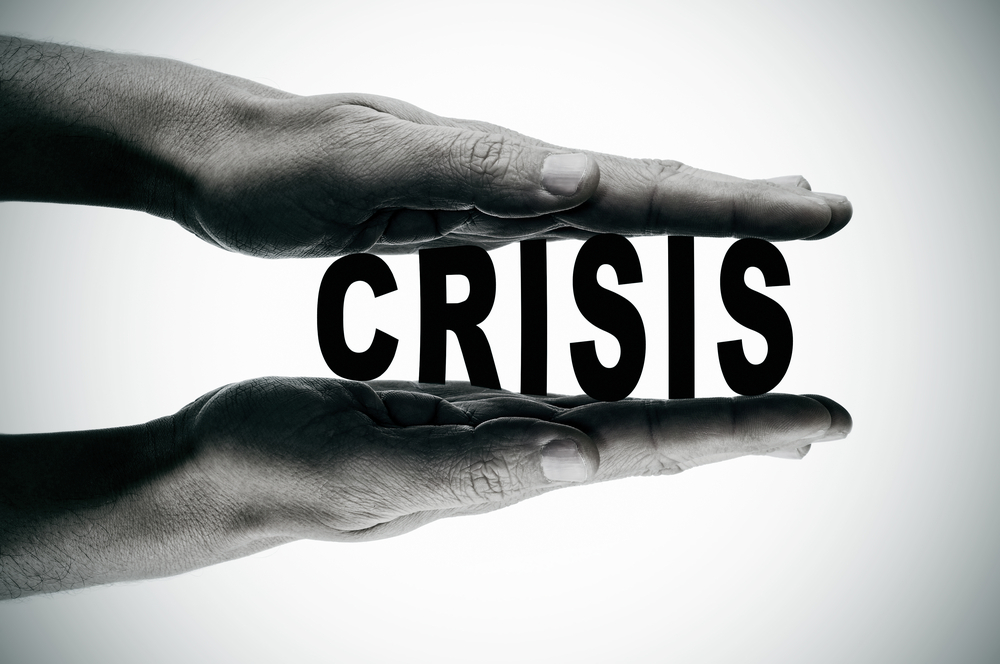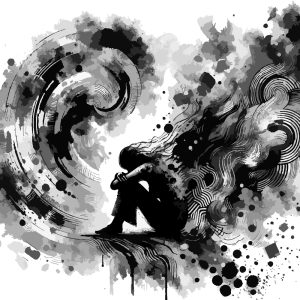Crisis is a state of emotional imbalance and in an inability to cope. This short video takes a closer look at the nature of crisis and what it entails. Please also review AIHCP’s Crisis Intervention Specialist Certification and see if it meets your academic and professional goals. The program is online and independent study and open to qualified professionals seeking a four year certification.
Crisis Intervention Counseling
Crisis Intervention and Domestic Violence
Crisis workers, specialists and counselors who help those in crisis and trauma come across many cases of abuse or domestic violence. Whether lower tier, on site, or dealing with long term trauma, domestic violence is a large problem within the world, especially against women. This is not to say it does not also occur against men, but the higher percentage of abuse and domestic violence is against women and children. Women especially suffer the brunt of domestic violence cases and suffer as victims sometimes unable to act. This blog will review what domestic violence is, factors surrounding the victim and perpetrator, as well as intervention strategies to help victims, usually women, to be able to heal and move forward.
Please also review AIHCP’s Crisis Intervention Specialist Program as well as its Anger Management Consulting Program and see if these programs meet your needs. Professionals in the Human Service Field who help battered women and other victims can utilize these certifications to broaden their knowledge and understanding of domestic violence.
What is Domestic Violence?

Domestic violence goes well beyond merely anger and loss of control but has many elements that go deeply into the psychology of the abuser and the willingness for the victim to sometimes endure for years. Domestic Violence also known as Intimate Partner Violence encompasses all types of couples including not only married, but those living together, same sex couples, and abuse of children or elderly (James, 2017, p. 286). Within Domestic Violence are key terms that designate the crime. Battering refers to any type of physical assault, while abuse is a more general term that not only encompasses physical violence but also emotional, verbal abuse as well as threatening (James, 2017, p. 287).
There are many theories that surround the relationship that ties abuser and victim together. Attachment/Traumatic Bonding Theory speculates that abusers abuse because of fear of losing the significant other due to childhood trauma of losing loved ones and lack of stability. Another theory is Exchange Theory which postulates that the abuser will continue to be violent as long as the reward outweighs the cost of utilizing violence to control. Intraindividual Theory investigates various psychological and neurophysiological disorders that play a part in why batterers abuse. From the victim perspective, many women suffer from learned helplessness and battered woman syndrome in which the woman accepts the abuse and the results as a learned behavior. In reverse, the abuser, usually a man, falls into the learned behavior of achieving results through inherent abuse. Feminist theory attributes abuse by men to be tied to sexist and patriarchal views within society that glorify the dominance of the man over the woman. Cultural reinforcement and glorification of aggression for success can also play a role in advancing aggression as a positive attribute. Finally, psychological entrapment proposes that women have to much to lose financially if they report or leave the abuser. In addition, the secret fills the victim with shame and ties the abused to the abuser and looks for the abused to justify and find ways to stay (James, 2017, p. 290-293).
There are also numerous secondary stressors and issues that can add or complicate to the abuse case. Issues surrounding geographic location can affect the duration of abuse if the abused is isolated. Economic and financial stressors can play a role in a woman staying with an abuser, as well as religious beliefs and stigma. Many women may feel disenfranchised or rejected if abuse was made public. Other stressors and factors include the age of the couple, with younger couples experiencing abuse at a higher level, as well as the role of drugs and alcohol (James, 2017, p. 294).
In addition, there are many myths about domestic violence that can sometimes look to dismiss it as not as serious. One such myth is that battered women overstate their case, display too much sensitivity, or hate men or are looking for revenge. The reality is most women who report are not reporting the first incident but are reporting after multiple cases. Other myths involve justifying the abuse as if the woman or victim provoked the beating, or that if it was truly so bad, she would leave the relationship. These false myths need dismissed in order to give domestic violence the spotlight it deserves and the importance for society to make it not a family personal issue but a community one (James, 2017. p. 294).
Profile of the Batterer and Abuser

Batterers usually can have any of the following issues. They were battered themselves, faced poor family conditions as children, have anger and impulse control issues, deal with addictions, or suffer from a variety of emotional and cognitive disorders. Characteristics of individuals, in particular men, who abuse suffer from a variety of issues. Many demonstrate excessive dependency and possessiveness toward a women. Others have poor communication skills and can only filter anger to express. Others may have unreal expectations of their spouses or partners. Others may see themselves as dominant and set up rigid family control patterns for the spouse and children that cannot be infringed upon. Many men who abuse also are characterized as jealous, impulsive, denying, depressive, demanding, aggressive and violent. In addition, many suffer from low self esteem and form addictive habits (James, 2019, p. 293). Many abusers usually look to minimize abuse. They may deny battering, minimize the battery, or project the battery onto the victim (James, 2017, .p. 321).
Some batterers are a family only batterers. These types act out but are quick to seek forgiveness. Others with low level anti-social tendencies, or violent anti-social tendencies are far more dangerous and terroristic. This does not mean family only batterers do not have serious issues or can lead to fatal outcomes. It just means, there violence is more confined to the home and nowhere else and it may not be due to deeper psychological disorders (James, 2017., p. 296). However, it is important to note, any physical violence, even a push or shove, or threat is too much. There needs to be zero tolerance for any type of behavior.
Profile of the Abused
Abused women on the other hand suffer various characteristics that fall into compliance with abuse and perpetrate its continuance. These characteristics are sometimes sought out by abusers since it enables control. Many abused women lack self esteem due to the continuous verbal insults. They lack self confidence in abilities to make the situation better. Many women who are abused come from past history of being abused, much as the abuser. They may regularize the abuse as something familiar and normal. Many women who are subject to abuse are very dependent upon the spouse and are unable to escape the situation, or fear leaving due to stigma. Many women cannot differentiate between love and sex and also feel it is their duty to fix the abuser by staying (James, 2017, p. 294).
Many women simply live and relive the vicious cycle of abuse. They accept the the tranquil periods or first phase of tranquility of no violence but soon enough, the second phase of tension starts to build and the third phase of a violent outburst occurs. Upon this, the relationship enters into a pivotal crisis state of whether the abuser will seek forgiveness or re-assert dominance where the victim accepts the situation and re-enters a new tranquility phase. Only till the victim stops the cycle will the domestic violence end (James, 2017, p. 296).
Assessment and Intervention
Upon any report of domestic violence, human service professionals are required to report. This involves documenting the abuse with pictures and statements, assuring the victim of her rights and giving her a plan, and finally, reporting the incident to appropriate authorities (James, 2017, p. 300). Most disclosures occur at shelters, hospitals, on scene, via a crisis call or after an arrest. Unfortunately, sometimes it is difficult to access battered women or to get them to display bruises or report a crime. The Battered Woman Scale measures traits that make it difficult for battered woman to discuss or report abuse. Overall, most women possess traits of those with PTSD (James, 2017, p. 299).
During the clinical interview it is important to believe a woman who reports battering. Most women who finally have enough courage to report, are finally doing so after numerous incidents and are finally realizing the life or death nature of the situation. It is important to listen with empathy, provide support and facilitate the necessary course of action for the victim (James, 2017, p. 302). It is important as a crisis responder or counselor to be real with the victim and listen with empathy. The victim should be allowed to express emotion and the time she needs to express and tell it. The counselor should maintain eye contact during this phase and exercise empathetic listening skills. It is also important to remain respectful and non-judgemental. This is a very difficult story for the woman to tell and she needs to be applauded and not questioned with “why”. Counselors need to also help restate the victim’s thoughts and feelings and help guide the victim to better options and ways to resolve the issue and any fears she may have or possess. Finally, it is important to follow through and check on the victim’s process (James, 2017. p. 304).
Over the long term, it is important to provide psychoeducation about abuse and feelings associated with it. It is important to emphasize how unjust family violence is and how to better cope with it in the future. Other victims may also need aid in dealing with PSTD, or other stressors that are preventing them from healing and moving forward. In addition, women, families and victims need social support to help through the process (James, 2017, p.314)
Many abusers will need more than merely anger management, but additional support groups to help individuals face their own inner demons and to see the damage their violence does to the people they love. This may also involve drug and addiction therapy, as well as public intervention.
Conclusion

Domestic abuse whether verbal or physical is always wrong. It has deeper roots usually and cause deep crisis and trauma to victims. Many who perpetrate it have their own inner issues. While men usually are the perpetrator, it is important to note that not only women and children can be abused, but men can also be abused by women. In addition, same sex couples also face the same domestic issues heterosexual couples face. Counselors, crisis specialists, chaplains, pastors and social workers can play large roles in helping stop the cycle of violence and helping victims find safety through good assessment, reporting and future therapy.
Please also review AIHCP’s Crisis Intervention Specialist Program as well as its Anger Management Consulting Certification. The programs are online and independent study with mentorship as needed.
Resource
James, R & Gilliland, B. (2017). “Crisis Intervention Strategies”. (8th). Cengage
Additional Resources
“The National Domestic Violence Hotline”. Access here
“Domestic Violence”. Psychology Today. Access here
“Domestic violence against women: Recognize patterns, seek help”. Mayo Clinic Staff. Access here
Strong, R. (2023). “What Is Domestic Violence? Learn the Signs and How to Get Help Now”. Healthline. Access here
Crisis Intervention and Sexual Assault and Abuse
One of the most heinous actions against another human being is sexual assault. Sexual assault is a broad term that can include rape but also any type of sexual activity that includes not only women, but also men and children. In all, sexual abuse, or rape involves any type of deliberate violation of another that incurs an invasion of the body by force without consent. It violates the persons privacy and inner space hence scarring the individual emotionally, mentally and physically due to this violation (James, 2017, p.242). There are many forms of rape, sexual battery and assault upon numerous different victims with different genders, orientations or ages. Sexual abuse or rape can be committed by a complete stranger, or by a partner, friend or family member. It can occur through force, drugging, or coercive means. It can be severely violent with physical resistance or without.

Ultimately it is a violation of personhood and intimacy. It is a stealing of innocence and security. Due to this, in all cases, it causes different levels of trauma and crisis within the existence of the person. In this short blog, we will review some of the issues that result from sexual assault and how to help others through it.
Please also review AIHCP’s Crisis Intervention Program
Myths Surrounding Rape and Sexual Assault
There are many myths and fallacies surrounding sexual assault regarding its nature and the victims themselves. Such myths include that rape is merely rough sex, or that rape is a cry to avenge a man, or that rape is motivated by lust, or that rapists are loners and not everyday people, or that survivors provoke or asked for it, or that only bad women are raped, or that rapes only occur in certain bad areas of town. In addition, other fallacies include that men who are raped are willing victims due to their strength or position. Other myths blame only homosexuals as perpetrators of abuse upon young boys. Other fallacies include limiting male trauma to female trauma, that once a victim, one will become a future perpetrator, or if someone enjoyed pleasure during the sex of rape, then the person enjoyed it (James, 2017, p. 244-245). These fallacies can create many misconceptions about the nature of rape and how to help victims of rape. The reality is rape or sexual assault is a traumatic event that violates and invades a person. It can lead to a variety of traumas and when myths and fallacies circulate, it can cause intense grief for the victim.
Nature of the Rapist
Most rapes and sexual assaults obviously occur to women or children, but the nature and makeup can be attributed to anyone who seeks to sexually hurt another person. In case of usually men, the rapist or assailant performs hostile acts and is filled with anger. Many may feel mistreated, anxious or threatened and have issues with women. Many see women as inferior or submissive, and feel the need to display power over them. Many display poor interpersonal skills and also show sadistic patterns of behavior (James, 2017, p.242). Regardless of gender, those who victimize others in cases of sexual assault fall into four categories. The first is commit due to raw anger. The second commit due to power exploitation. The third commit to power reassurance and finally the fourth commit due to sadistic needs (James, 2017, p. 242).
Rapists, especially molesters, will utilize grooming techniques to find victims and entice them with rewards, only later to entrap them with manipulation to continue in the action by degrading them, blaming them, threatening them, or blackmailing them into secrecy. Blaming, shaming and disenfranchising the voice of the young person is key to the predation (James, 2017, p. 268).
The rapist or assailant can commit these crimes on a date, abduction, or even within a relationship. It be between a family member, spouse, friend or total stranger. All cases are a grave injustice to the autonomy of the other person and leaves great traumatic scars that require crisis care and long term counseling. The crimes against children are especially heinous and cry to heaven for justice. Fortunately, crisis specialists can play the role of angels on earth and try to help these victims.
Helping Sexual Assault Survivors
The initial impact stage of sexual assault and rape leaves the person within the first 2 weeks raw with emotion and maybe even physical pain from the assault. The person may be haunted by nightmares, flashbacks, dissociation, hypervigilance, or other reactions to acute stress (James, 2017, p. 248). These peritraumatic stress syndromes are natural for anyone who was involved in a severe trauma. They may gradually over time relax or persist into traumatic stress disorder or even PTSD (James, 2017. p. 250).
Among the many possible reactions, some may exhibit multiple emotions, while some may appear unaffected on in a state of shock. Some may wish to not discuss the event. Others may feel humiliated, demeaned or degraded without value. They may feel stigmatized, shamed or an extreme impaired self image. Some may blame themselves for the rape or assault. Others may have difficulty trusting others again. Some may become depressed or suicidal. Others may become extremely angry and seek revenge (James, 2017, p. 252).

After 3 months, many will still need to continue medical care for physical issues as well as mental counseling. Some may have difficulty resuming or returning to work. Others may have a hard time resuming sexual relations. Some may also display mood swings and emotional outbursts. Others may continue to display nightmares, flashbacks and other symptoms of PTSD, as well as depression or suicidal ideation (James, 2017, p. 253). Children will show regression, odd behaviors, or acting out and if left untreated may deal with unresolved grief and trauma throughout life.
Counselors, as well as social support among friends and family can play key roles in healing. It is important for those around the victim to be understanding of the trauma and the damage it causes in regards to mood swings, emotional outbursts and the need to express anger. Friends and family need to be available and counselors need to show empathy and listening. In doing so, it means recognizing the hurt, the trauma, the self esteem issues, the lack of trust, the fears and triggers, as well as letting her make some decisions on her/him on his/her own to again feel autonomy (James, 2017, p. 254).
While those suffering from more traumatic reactions may require exposure treatments, affective regulation and cognitive therapies through licensed counselors, crisis specialists can help the victim feel safe and secure. The crisis specialist can reassure and help the person see solutions and answers to the problem and offer insight to their emotions. In these cases, helping individuals find grounding through breathing and relaxation techniques can be helpful. It can help an individual regain equilibrium. In addition, many will need help with grief and understanding loss. Grief resolution and meaning making will be essential as the person attempts to tie together this horrible event with one’s life story and finding meaning it. James points out that the two first tasks are clearly stabilization and finding meaning (2017. p. 266).
Many individuals may require support groups that share the similar trauma of sexual assault, as well as ways again to feel safe and regain autonomy. This can be through the help of others or through other ways of taking control, whether it be through self defense training, or weapons training. It may involve also finding closure through justice through the judicial system. Some may also look to find even deeper meanings by helping others. Many may form support groups or push forward into forming organizations or public awareness groups for sexual assault survivors.
Conclusion

Sexual assault is one of the most disgusting and grievous offenses against another human being. It is broad and wide against numerous target populations according to orientation, gender and age but it usually involves power, anger and sadistic energy. Individuals suffer intense trauma by this violation and many feel a variety of emotions that can lead to various behavioral issues and future PTSD. Even for those who suffer the general trajectory still suffer emotionally, mentally and physically and must go through a process of stabilization meaning making and finding autonomy, safety and healing again.
Crisis Specialist play a big role in the initial phases of helping sexual assault victims find safety and ability to stabilize their emotions and mind after the assault. They then guide the victim to finding the necessary long term aids to help the person again find healing and wholeness.
Please also review AIHCP’s Crisis Intervention Specialist Certification. The program is online and independent study and open to qualified professionals seeking a four year certification in crisis counseling. The program is great for counselors, social workers, chaplains, as well as nurses, EMT and police and rescue.
Resource
James, R & Gilliland, B. (2017). “Crisis Intervention Strategies”. (8th). Cengage
Additional Resources
I am a victim of rape/sexual assault. What do I do? Access here
Legg, T. (2019). “Sexual Assault Resource Guide”. Healthline. Access here
Pappas, S. (2022). “How to support patients who have experienced sexual assault”. APA. Access here
Compassion Fatigue and Burnout in the Helping Professions
The helping professions are strenuous at a personal level but also a professional level. They demand the best of everyone to not only at a personal level but also at a professional level. One is not only taking upon their own personal stressors but also a number of other personal stressors and crises of other people. Whether a police officer, social worker, counselor, nurse, chaplain, first responder, crisis worker, or hospice care worker, one will find oneself in situations of intense pain, crisis and trauma. This involves not only juggling one’s own daily life but also being emotionally, mentally and physically available at a professional level. Compassion fatigue and burnout is very common in these areas and can cause intense crisis to the helping professional.
Burnout and Compassion Fatigue

According to James, burnout is the “internal psychological experience involving feelings, attitudes, motives and expectations…the total psychic energy of the person has been consumed (2017, p. 544).” Burnout just does not occur as a crisis overnight but is a long process that gradually emerges over a variety of reasons. Occupational burnout according to James occurs for six major reasons. First, workload becomes too complex, urgent and traumatic. Second, freedom and control are restricted and the individual becomes micromanaged and has to deal with ineffective leaders or teams. Third, lack of reward whether emotional, financial, symbolic or even simple recognition of service is ignored. Fourth, absence of social support. Fifth, lack of justice and fairness to the case or situation and sixth, discordant values with employer or organization (2017, p. 544). All of these sources can lead individuals into a state of burnout when dealing with their job or cases. In addition, these overall stressors can lead to stress related diseases or as Selye refers General Adaptation Syndrome (James, 2017. p. 545).
Individuals who suffer from burnout face multidimensional symptoms which are behavioral, cognitive, spiritual, affective and physical. Burnout according to James can be trait in that is is all encompassing and has rendered the worker unfunctional, or it can be a state of activity in which the activity being performed over and over becomes the primary source (2017, P. 551).
Those who suffer compassion fatigue share in the same basic issues of burnout but because of dealing with cases and victims. This can in addition lead to secondary traumatic stress disorder through the stories and experiences or at a higher level secondary trauma via vicarious traumatization where the caregiver beings to transform and shares the client’s related trauma (James, 2017, p., 554-555).
Intervention for Burnout
Individuals need to identify key signs of potential burnout and address it properly. The biggest thing to realize is how can someone help another person if one is in crisis him or herself? It is important to administer self care and recognize the signs of burnout before they negatively affect career. This involves recognition of burnout, addressing them with appropriate measures, setting boundaries when necessary, and practicing self care when appropriate. Organizations are also responsible to ensure that employees are not over worked, and in cases that involve trauma ensure that their workers receive the necessary counseling to process what they witnessed.
Since many Human Service workers are perfectionists and many place too much weight on their shoulders to help as many as possible, it is important for self evaluation. Hence intervention exists at three levels involving training to identify burnout, organizational oversight and individual self care (James, 2017, p. 557). Training to identify burnout is key and also emphasis on self care. Individuals need to have a strong understanding of the type of trauma their career will demand. Organizations need to maintain proper monitoring of hours of their workers, as well creating a work place that is open to expression, ideas and values that both organization and employee share. Managers need to take a personal interest in their workers mental health and identify signs of burnout or compassion fatigue. When seen, they need to intervene and help the individual find time off, counseling or other resources to help their employee fulfill daily duties. Social support systems within the organization that supply listening, technical support and emotional support are key (James, 2017, p. 562). Individual support groups of liked careers can also play key roles in helping individuals face the stressors and traumas of the job.
Self care is one of the key preventing resources to burnout as well as a way to alleviate it. James attests that individuals are just as responsible for maintaining emotional and mental stability as their employer (2017, p., 564). Hence it is important to self monitor for signs of distress and if distress starts to occur, then to properly address it. This may involve recognizing that the world is not one’s full responsibility or other false narratives that only oneself can help this particular person. It may involve not being a perfectionist and reducing work load. It may involve understanding that one is not defined solely by career but also multiple other social connections It may involve imposing boundaries and understanding it is OK to say no to something or someone. Self care is hence critical especially since burnout slowly erodes a person sometimes before a person can recognize it. Below are a few self care ideas in relation to cognitive, behavioral, affective, physical, social and spiritual aspects of one’s life.

Cognitive
- One’s thinking has to go beyond problems at work. It is important to find time cognitively to think of other things. Reading and music can be excellent forms of self care that challenge the brain and force it to think of other things than work. Pick up a novel or even read a comic book!
- Study something new and entirely foreign and different from work. Challenge oneself with games, or crossword puzzles
- Set boundaries with others who push
Behavioral
- How we act at work needs to be different at home. Take time to loosen up and dress down. Enjoy the simple unrestrained life at home and embrace it. Act upon adaptive coping strategies that promote healthy behaviors and avoid maladaptive ones that attempt to hide the issue
- Do something safe but spontaneous and fun outside the regular weekly life
Affective
- Emotionally, case loads and co workers can be exhausting. We can have anger and frustration. It is important to emotionally care for ourselves. This can involve music, but also meditation and mindfulness.
- Massage
- Treat yourself to a snack or dessert or anything that is safe but provides self comfort
- Visit a place that is special
- Allow time to express to a good friend and vent or utilize a diary to manage negative emotions
Physical
- Exercise is key to helping one let out aggression but also release healthy endorphins.
- Exercise can give one other goals outside the office such as good health and strength
- Jogging, biking, hiking, swimming, weight lifting, brisk walking, yoga or whatever physical activity helps you find yourself
- Find time to sleep
Social
- Many times, individuals with burnout turn into only work and become isolated. It is important to remember that life exists after work. Positive activities are key. Some can be planned, others should be implemented as time permits. It is important to have time management so that activities do not stress or make one feel they are neglecting work
- Family game night
- Out to dinner
- Hobbies
- Movie or show
- Any type of party or entertainment
- vacation
Spiritual
- Balance in life is key. We many times balance profession, academics, mental, emotional and physical life but forget spiritual. Spirituality is a key health component of a person because whichever the belief it gives life a higher meaning.
- Personal prayer
- Reading the Bible, Koran, Torah, or whichever spiritual or life meaning book on philosophy
- Attending one’s religious services and other events
- Keeping good spiritual hygiene that correlates with one’s religious beliefs
Conclusion

Burnout occurs especially for human service professionals. Those in healthcare, behavioral health, ministry, human service, and public service are faced with the double edged sword of not only personal issues but also being exposed to secondary stressors of other people. Through time, compassion fatigue or burnout can occur and professionals need to be aware of what causes it and also understand the steps to prevent as well as intervene regarding it. Organizations and employers also have a responsibility to protect their crisis and human service workers through various checks and programs. Self care is ultimately a key friend to any human service professional and is a must for anyone who wishes to work in a field exposed to so much trauma and pain. While self care can be very subjective in nature to the person’s life it is very objective in the end result of better affective, physical, and cognitive functioning for the professional
Please also review AIHCP’s Stress Management Consulting Certification, as well as AIHCP’s Crisis Intervention Specialist Program. Both programs are online and independent study with mentorship as needed.
Resource
James, R. & Gilliland, B. (2017). “Crisis Intervention Strategies”(8th). Cengage.
Additional Resources
Jackson, K. (2014). “Social Worker Self-Care — The Overlooked Core Competency”. Social Work Today. Access here
Sparks, A. (2023). “7 strategies to help prevent burnout”. Medical News Today. Access here
Sherman, L. (2022). “8 Tips for Avoiding Burnout and Functioning at Your Best”. Healthline. Access here
Hendrlksen, E. (2021). “7 Ways to Recover from Burnout”. Psychology Today. Access here
Stuck in Grief Video Blog
Some individuals remain in grief longer. Some because of prolonged grief or in other cases depression, while others develop maladaptive coping strategies that keep them in acute grief longer. It is important to realize one never recovers from grief or loss because the object or person lost was loved, but one does learn to adjust and process through the acute grief phase. Those who do not usually do not because of poor coping and views on the loss.
Psychological Recovery After Crisis
Psychological recovery after a trauma and crisis event can take weeks, months, or even years depending on the damage of the event to the person’s mental, emotional, physical, financial and social modes of existence. For some, pro long grief, or depression, or PTSD can become long term symptoms that require professional mental health services and long term care. For some, the acute phase of crisis hovers over the person and the person requires assistance to again find firm grounding. Most require basic psychological recovery that involves identifying the primary issues and needs of the person post disaster or traumatic event. Many people are resilient and may not suffer long term mental issues, but most still require help and aid. The National Child Traumatic Stress Network created an excellent CE course that discusses Psychological Recovery. Much of the information supplied is based on general psychological and professional application but the Network did an excellent job of organizing it. Bear in mind, like Psychological First Aid, Psychological Recovery services are not necessarily supplied by clinical licensed counselors or social workers, but can be given through unlicensed professionals who work in Human Services. Low tier entry level professionals with some academic and professional training can handle numerous cases that do no have pathology and help coach and teach individuals with basic mental health techniques to recover from acute crisis. This is the primary aim of Psychological Recovery within the area of Crisis Intervention. It looks to help individuals after traumatic event to find the resources and skills to move forward weeks or months after an event. It is less about pathology but more so about building resiliency and promoting teaching skills that can be taught by anyone in pastoral or unlicensed settings to help individuals grow after the event.

Helping individuals recover from a disaster or any traumatic event is key to a person’s resiliency to rebuild after the ashes and trauma. According to the Network, it looks to protect mental health and maintain it, enhance abilities to address needs, teach skills to solve problems and prevent maladaptive coping by encouraging positive coping. Like in Psychological First Aid, it focuses on the safety, calmness, self efficacy and connectedness the person possesses. Does the person feel safe after the event? Is the person calm and not exhibiting nervousness, or PTSD? Does the person portray self resiliency and ability to cope? Is the person connected to family or friends or have access to public and community resources? These are important questions and are essential when meeting with a client who is a victim of a disaster. Within any meeting though, it is important for the Crisis Intervention worker to understand nothing is a quick fix. There will be multiple issues and each session represents a chance to help the person meet their needs. It is not a mental health treatment but instead a mental coaching to help individuals get their lives back. Hence each session should teach a particular skill, make a plan and receive reports how those plans work.
The National Child Traumatic Stress Network lays out various skills that are essential to help individuals get their lives back. Within the critical phase of information gathering, the Crisis Intervention worker needs to identify current needs of an individual, prioritize them and make a plan of action. Involved with this are skills that are taught to help meet each need and how to carry out that skill in everyday life. Upon completion of skill utilization, the client reports back a week a later with how things have improved or not improved. Upon this, plans can be troubleshot or retuned as well as other skills evaluated. It is important when implementing plans and teaching skills not to overload an already stressed person. Among some of the most important skills to help individuals includes rebuilding healthy connections, managing emotional reactions, promoting healthy thinking, encouraging positive activities and building problem skills. The Network presents in-depth modules on all five basic skills that help train crisis intervention workers better help individuals manage crisis and issues.
Bear in mind, when in crisis intervention, one may be helping individuals with a myriad of problems from what appears small to large. Some may be more emotionally distraught, physically hurt or others may be financially hurt, or still others may have lost a home. Others may have temporary problems that are causing current stress, while others may have longer lingering issues that take more time to fix. Some may be elderly with particular issues related to age, medication, or connection with others, while others may be children or adolescents who are suffering from trauma of the event, or even having issues reconnecting at school. The combination of possible issues and problems faced by survivors of disaster or experienced trauma and crisis are endless and each one requires attention and rapport with the client. We will take a closer look at the 5 helping skills emphasized by the Network.

One of the most basic and important skills in counseling is problem solving. We have discussed in numerous blogs the importance of basic problem solving skills in counseling and how to implement them. In Crisis Intervention work, problem solving while simple in theory is difficult in application because problems are very real and affect people in real life. They just do not go away or vanish but have real affects on a person’s whole self and how they function. Problems are not so much objectively the issue, but more so, how the person subjectively views them. If the stressors of the problem seem overwhelming, then the Crisis Intervention worker needs to help the person discover the tools to make it less daunting. With any problems, it is important to identify and label them. This helps organize the issue and see how it is effecting the situation. When discussing, it is important to weed out problems that are not the problem of the person or problems that the person cannot control. In addition, it is important to set goals to counter the problem and brainstorm together some options to achieve that goal. Together, best solutions are chosen and then they are implemented. Upon return visit, crisis intervention worker and the survivor can discuss what worked, what did not and overall trouble shoot and analyze why something worked or did not work. Ultimately it is important to instill hope into the person and grant them again power and control over the situation so that they can again become resilient forces in their own life.
Another skill, according to the Network, is rebuilding healthy connections. Individuals or survivors after a crisis such as a hurricane or tornado or earthquake can lose many things in life including a home. Those who are displaced need connections to find firm ground again. It is hence important to help survivors review their connections and make a connection tree listing individuals they know and what each person means to them. The crisis intervention worker can then help the person identify best suited individuals that can offer immediate help while also crossing off those who are unable to help or may not be the best influence in the given moment. Helping the person reconnect with these resources can help individuals possibly find transportation, a place to temporarily stay, or find emotional support. Sometimes, these connections may not be immediate but could also be fellow survivors or even agencies that can better alleviate the situation.
The Network also discusses the importance of the skill of managing emotions. Numerous individuals after trauma have negative reactions and affective responses to triggers that may remind them about the disaster or traumatic event. For example, a boy who experienced a tornado, may begin to feel uneasy, nervous, or fearful when a strong wind blows outside. This can trigger a memory associated with strong winds of the tornado. Or a small child may become fearful if the lights go out because the lights went out when the hurricane struck before. The mind associates and ties together negative events with circumstances that by themselves are quite innocent. This can trigger a response. Of course, in PTSD, this trigger is far more extensive due to trauma and the inability of the brain to properly process and file the memory but many after an acute crisis experience initial negative affective responses to neutral occurrences that happened during the disaster. It is important for the crisis worker to help these individuals label the emotions they feel with the trigger and cognitively reframe the situation. This types of CBT can help individuals re-understand the emotion and where it is coming from and better react when the similar triggers appear. In addition, sometimes, individuals may need to utilize meditation, breathing, or other grounding techniques to help calm themselves when a trigger appears that reminds them of the disaster. For most survivors, overtime, the trigger becomes more and more numb as one perceives no negative consequences tied to the howl of the wind or lights going out. In the meantime, it is important to help especially children how to cope, react and deal with triggers associated with disaster.

While emotions can need managed, thoughts can also be an issue. While some may deal with affective issues, others may walk away from the disaster with cognitive distortions and negative thinking. The Network proposes instilling in individuals healthy thinking. Healthy thinking is also a cognitive process where not only emotions are reanalyzed but also thoughts. Healthy thinking looks at negative thoughts associated with the event. Many survivors may have negative thoughts about how they acted, what they did or did not do, or who they are blaming for the crisis. These thoughts can derail the healing process because the thoughts are tied with anger, shame, guilt, or sadness. Sometimes, the thoughts are totally untrue but perceived as true to the person. Crisis Intervention workers need to weed through the multiple thoughts the person may have about the event and their participation in it. Some may feel it is their fault, or if they did this or that, it would not have been so bad, or others may feel ashamed for not doing more. It is important to identify unhealthy and untrue thoughts about the event and analyze them and reframe them with the reality of the situation. This can help the person move forward and focus on more healthy thoughts that are conducive for the future. Instead of thoughts of despair, thoughts are transformed into thoughts of hope that will focus on fixing the situation in the present instead of lamenting about it in the past.
The final skill that can be important for some individuals is helping them again live a normal life through positive activities that again give joy. This does not mean one immediately celebrates after a house is destroyed but it means gradually, individuals plan to give self care, or find connections or positive things to do that take the mind off the trauma and event. Many times children are also distraught because regular events no longer occur after the disaster due to limitations of recovery. Helping children find a regular routine is key but also giving them, and oneself even, joy is also key. As rebuilding one’s life continues, it is important to not only find silver linings and hope, but again to do something that was once fun, or even do something different. Whether it is family game night, or going out to eat, or taking a brisk walk, or working less and spending more time with the family, it is important to find time to again live. Crisis Intervention workers can help survivors find the importance in this and help them identify and schedule something within the week, even if one thing, to do within their means.
Conclusion
The National Child Traumatic Stress Network offers a various CE courses that can help those in Crisis. AIHCP also offers a Crisis Intervention Specialist Certification and individual CE courses. It is important to be trained, even at lower tier levels, to help survivors, victims and individuals in crisis again find firm ground. Not all cases will involve drastic mental health counseling or involve PTSD, but many will be merely individuals trying to find themselves again after a disaster with multiple basic needs and concerns but who are overwhelmed with the event and secondary stressors. Crisis Intervention workers, counselors, social workers, chaplains and other Human Service Professionals can help individuals again find joy in life and the resiliency to rebuild what was lost.

Please review AIHCP’s Crisis Intervention Specialist Certification. Upon completion of the seven core courses, one can apply for certification. The program is online and independent study with mentorship as needed and open to qualified professionals seeking a four year certification.
Additional Resources
The National Child Traumatic Stress Network. Access here
Swaim, E (2022). “7 Reminders to Carry with You on Your Trauma Recovery Journey”. Healthline. Access here
“Resources on trauma and healing, including a guide inspired by ‘The Color Purple’”. APA. Access here
“Recovering Emotionally After a Disaster”. American Red Cross. Access here
Spirituality and Grief Video
Spirituality is an important part of grieving for many. For some it may be a source and anchor to help adjust to the loss, while others it may be a source of comfort and helps reframe the loss to a greater ending that is eternal. Sometimes, spirituality if maladaptive can also cause issues in the grieving process and this can cause internal and existential havoc for the person as he or she tries to connect belief with loss.
While many grief counselors may be hesitant to discuss spirituality in secular settings, spirituality and its role should in each individual should be understood and the utilization of any outside resources within the community to help aid in a person’s healing should be encouraged.
Please review the video for further information and do not forget to review AIHCP’s Grief Counseling Certification. The program is online and independent study and open to qualified professionals seeking a four year certification.
Crisis and Grief: What is Psychological First Aid?
Individuals who experience traumatic events need help facing multiple issues. Some individuals may cope better than others, while others require emotional stabilization. The purpose of first responders and volunteers helping the scene though require abilities to meet the needs of individuals. Sometimes, individuals may need only mere direction or information or basic supplies, while other times, individuals may need crisis intervention care to help stabilize themselves emotionally.

In many past blogs, we have discussed the importance of Crisis Intervention in helping individuals during a traumatic event. Traumatic events such as natural disasters, terrorism, shootings, criminal assaults, suicide, or war zones all present deep rooted trauma to individuals who endure them. Some may be better able to cope but when traumatic events occur they still present an abnormal level of surprise, pain, and loss. Hence, someone on scene will have some type of need, whether physical, mental, emotional, social or all points. First responders, volunteers, chaplains and other healthcare professionals are able to help everyone in the moment of a traumatic event by meeting whichever needs are present according to the person through basic psychological first aid.
Psychological First Aid is not long term therapy or looks to resolve the devastation that may take months and years to fix, but it does look to stop the emotional bleeding on the spot and meet the basic physical human needs of anyone in crisis, grief, trauma or loss. Whether elderly, children, adults, or others of any cultural identity, bad things happen and when they do, people need trained professionals on site to help meet immediate needs.
PFA looks to ensure grant the person a feeling of safety in the chaos, help calm and stabilize those emotionally disturbed, find necessary persons of connection for the person, connect individuals with the necessary long term aid, and grant the person a sense of hope in the despair around them. Chaplains, first responders, disaster volunteers, healthcare professionals, as well as social workers and counselors on scene are all trained in basic PFA and some at higher levels due to their training and licensures to help individuals at the level of help they need. Whether it is simply offering water or giving shelter for a night, or helping someone find a loved one, or consoling a child, or directing a family to proper resources and federal assistance to rebuild a home, or referring something emotionally distraught to a mental health professional, or finally even helping ground a person in extreme disorientation and disequilibrium, the goals and duties of those in PFA are about helping the particular need in the moment.
Like any crisis or situation, those trained in PFA are expected to initiate contact with individuals on the scene. Some may appear fine, others may appear disorientated. Those in trained should focus on the most emotionally disturbed individuals that are displaying dis-equilibrium and immobility or those who seem out of place, especially elderly or children who are alone. Crisis professionals should introduce themselves by name and the agency they work with and ask the name of the person. Asking what them what the issue is or what is wrong is a good way to help. Forcing oneself on the person, or asking detailed accounts of the event are not the best way to introduce and form a bond. Introduction and making contact and forming a bond is a key in Crisis Intervention but also critical on scene when dealing with any victims or individuals faced with trauma.
Obviously helping the person feel secure is key. Some may already feel safe, but others may feel the threat of danger still overbearing upon them. PFA workers should help reassure a person that they are safe and address all fears without dismissing them. Instead, they should help the person feel a sense of security through their presence. Obviously someone who has been raped, assaulted, or a person who has just had their home flooded or destroyed by a tornado will require long term care, but the purpose of PFA is to help the person feel secure in the moment so that the individual can logically think without the presence of fear motivating them.
In certain cases, individuals suffering from trauma need help finding calmness. They need help becoming stabilized emotionally. They are unable to cope since their coping mechanisms have become overrun and their emotional equilibrium has become imbalanced. Hence logical choices are removed and instead a state of affective, cognitive and behavioral dysfunction manifests. The PFA worker depending on their level of training and experience can help these individuals find balance and coping. Some times helping ground the person through breathing and focus techniques can bring a person back to the current event, while other times, discussing the issue and alternatives to the narrow options one faces when in crisis. In many cases, individuals will suffer from mental issues such as disorientation, lack of concentration, memory loss, or poor cognitive reasoning, while in other cases, individuals may suffer affectively through various emotions. Some emotions may be displayed such as anger or intense grief, or even guilt or shame about the event, while others may retreat from contact and suffer from disassociation, or become stuck in their own thoughts and look to flee human contact. Others may display dangerous behavioral actions and will need controlled or helped to find calm to avoid danger to themselves, others and various workers at the scene.
After a person is calm, safe and stable, one can begin to access the person’s mental, physical and social needs. Sometimes, the needs are affective, or physical, or cognitive or social, but it depends on identifying the clues and also talking to the person. Some needs may be as simple as a blanket or a glass of water, while others may be concerns over a missing child or relative or friend. Some may have minor injuries or headaches that need addressed due to the situation. Others may have concerns where one will sleep for the night if a storm damaged the home. Others may even have concerns beyond the immediate which can be addressed such as an event a person may have had the following day that will now have to be canceled. In the mist of this, the PFA worker needs to offer assistance whether at the cognitive level or physical level. This assistance may be in the form of advice, meeting physical needs, or helping the person organize what needs organized. It can involve helping the person better understand the situation and supplying the person with the necessary information they need to deal with the issue at hand.

PFA workers can also help and offer assistance through connecting individuals to other people, friends and family. Sometimes helping a person contact his friend or family helps the person find a place to stay or provides transportation. Many individuals in crisis have support systems but they are unable at the moment to contact those persons and they need assistance in making those contacts. In addition to immediate connections, later, PFA workers can help individuals find longer term help through social services, federal assistance and on a more individual note, references for mental health or healthcare services. During this process, it is important for PFA workers to not promise things but to be as honest as possible about what can be done or not done. Lying or making false promises to help alleviate a person’s mental state will not help the situation.
Throughout the process, the PFA worker also needs to address proper coping in the moment versus maladaptive coping. Like a coach, a PFA worker can help the person face the immediate issue through productive coping strategies that involve reframing of the situation and putting energy into what can be done in a given moment. This involves a variety of stress management and anger management concepts and helps the person focus on what can be done instead of utilizing maladaptive strategies that avoid or ignore the situation. Obviously, longer term care reviews the necessity of healthy coping with any traumatic event. It is unlikely that those who face traumatic events will have the same life. Recovery from injuries or therapy still leaves scars and individuals need to have the tools to face those past traumas. In addition, repairs and construction and family functions may be altered. Things will change and the ability to be resilient and cope depends on multiple subjective and objective realities. A person’s support system is key and this is why referrals and connections are so key in finding the person the help they need to create hope. With hope a person can find resiliency and the ability to adapt and rebuild in the future with healthy coping strategies.
Conclusion
Psychological First Aid is a key component of crisis intervention and for those who work in it from a mental health, healthcare, law enforcement, first responder or chaplaincy component. Knowing how to help a person in the moment and stabilize them and help meet the person’s physical, affective, cognitive and social needs are important to the recovery and adjustment of the person to the traumatic event. These events can range from disasters to assault or war zones and suicide. In all cases, crisis intervention looks to help the person find equilibrium and mobility to handle the situation, PFA helps individuals with the core basics to help those with little needs to those with the greatest needs.

Please also review AIHCP’s Crisis Intervention Specialist Certification and see if it meets your academic and professional goals. The program is online and independent study and open to qualified professionals seeking a four year certification in Crisis Intervention.
Additional Resources
“Psychological First Aid”. National Child Traumatic Stress Network. Access here
“Psychological First Aid (PFA).What is Psychological First Aid?”. Minnesota Department of Health. Access here
“What is psychological first aid?” (2024). Doctors Without Borders. Access here
Griffin, M. “Psychological First Aid: Addressing Mental: Health Distress During Disasters”(2022). SAMHSA. Access here
14 Essential Tools for Professional Crisis Interventionists
 Written by Veronica Turner.
Written by Veronica Turner.
Professional crisis interventionists are the unsung heroes, the knights in shining armor who step in when life throws a wrench in the works.
In a world that can change in the blink of an eye (lesson learned from COVID-19), these professionals have their work cut out for them. They need to be ready for anything, from emotional meltdowns to biohazard nightmares.
This guide will take you on a tour of the essential tools and resources that every crisis interventionist should have in their toolkit. From the physical tools that help in managing emergencies to the skills and resources that underpin their practice, we’ve got it all covered.
Who Exactly Are Professional Crisis Interventionists?
Professional crisis interventionists are a versatile team of specialized individuals, armed with the knowledge and skills needed to tackle emergencies. Picture them as savvy conductors enabling the harmony of calm amidst the discord of crisis.
These experts come equipped with a plethora of skills, from psychological savvy to the acute ability to assess and de-escalate volatile situations swiftly.
Often hailing from backgrounds in social work, psychology, or emergency services, they stand as the steady heartbeats amid pandemonium. Their roles may vary – some might guide individuals through mental health crises, while others coordinate responses to natural disasters.
Regardless of the crisis, these professionals bring unwavering hope and resilience, connecting individuals and resources to sail through even the stormiest of times. With compassion at their core and pragmatic strategies in their toolbox, interventionists transform chaos into tranquility, crafting trails toward safety and hope amidst the darkest of circumstances.
Four Essential Tools for Professional Crisis Interventionists
Crisis intervention is a high-pressure field where the right tools can be game-changers. Let’s delve into these pivotal tools that allow interventionists to work their magic.
-
Communication Devices
In the digital age, communication is king. Trusty smartphones or radios are the lifelines for interventionists, connecting them with teammates, emergency services, and vital resources.
These gadgets ensure smooth information flow, facilitating rapid decisions in crucial moments. They also serve as vital documentation tools, capturing evidence, and managing follow-ups. It’s like a trustworthy courier, ensuring vital messages reach their destination promptly and clearly.
-
Personal Protective Equipment (PPE)
To knights, it’s armor. To interventionists, it’s PPE. When charging into bio-hazardous environments or dealing with violent individuals, PPE is the interventionist’s armor, shielding them as they face the frontlines of the crisis.
The PPE ensemble can include gloves, masks, goggles, and protective clothing. They provide a protective wall, freeing the interventionists to focus on the prevailing crisis without concern for their safety.
Mastery of PPE usage extends beyond wearing the gear; it also involves knowing how to use it correctly and efficiently.
-
First Aid Kits
Life is full of surprises, and in crisis scenarios, a first aid kit can indeed be a life-saver. Often, interventionists find themselves in situations demanding immediate medical attention, and a well-stocked first aid kit can be a powerful ally.
Brimming with essentials such as bandages, antiseptic, pain relievers, and more, these kits enable interventionists to handle minor injuries and stabilize individuals until professional medical help arrives.
But the first aid kit is more than just a box of medical supplies. It’s a beacon of hope, a silent promise of help when needed.
-
De-escalation Techniques
Words can be powerful tools when tensions run high. De-escalation techniques are the verbal artillery interventionists use to diffuse tense scenarios and restore peace.
These techniques masterfully employ active listening, empathy, and articulate communication to diminish stress and anxiety.
Imagine a situation teetering on the edge of meltdown. With their verbal skills, an interventionist can gently steer them back to a state of balance. It’s like watching a skilled conductor seamlessly bring harmony to disharmony.
De-escalation techniques are an art, honed through continuous learning and experience. They truly exemplify the interventionist’s ability to connect on a human level.
Five Resources for Professional Crisis Interventionists
Professional crisis interventionists rely on key resources to enhance their skills, ensure effective support, and stay informed in the ever-evolving field of mental health care.
-
Suicide Cleanup Services
Occasionally, those in the field of crisis intervention are confronted by the painful residues of human despair. In the wake of suicides or traumatic events, suicide cleanup services emerge as an invisible helping hand, restoring affected areas to safety and sanitation.
Staffed by experts in handling biohazards and other risks, these services embrace a stance of respect and compassion, allowing our brave interventionists to focus on providing human support, freeing them from the worry of physical cleanup.
Viewed in this light, suicide cleanup services become a key link in the chain of responsibility, bringing practical aid at difficult times.
-
Crisis Hotlines
Crisis hotlines, like the National Suicide Prevention Lifeline (U.S.) or the Crisis Call Center, exist as a beacon for those lost in a sea of distress, delivering instant aid and guidance. These lifelines are often the first port of call recommended by interventionists seeking additional resources.
Manned by skilled professionals who possess both a kind ear and practical wisdom, these hotlines are a 24/7 cornerstone of support. When the world seems pitch black, a hotline call can light a candle of hope, mapping a route to safety and healing.
-
Peer Support Networks
Peer support networks are the collective heart of those who have walked similar paths, providing a nurturing environment for open sharing and healing. These networks offer interventionists a wellspring of wisdom, which they can share with those in their care.
Participating in a peer support network can also be a journey of personal growth and self-nourishment for interventionists. By forging connections with comrades in the field, they gain fresh viewpoints and comprehensive strategies for their practice.
Embodying the strength of unity, these networks remind interventionists that they are not solitary warriors in their quest.
-
Professional Associations
Professional associations serve as a guiding compass for crisis interventionists, unfolding a treasure chest of resources, and opportunities.
These organizations offer gateways to vital training, research, and networking opportunities, helping interventionists stay informed and connected.
Membership serves as a navigation tool, shepherding interventionists through the labyrinth of their career, providing a sense of belonging and an oath to uphold the highest standards of service.
-
Continuing Education Programs
The realm of crisis intervention is ever-fluid, and keeping pace with its streams is crucial. Continuing Education Programs are the fountains of knowledge that quench interventionists’ thirst to expand their skills and stay prepared to tackle new challenges.
These programs cover a broad field, from groundbreaking improvements in mental health care to inventive intervention strategies. By partaking in continuous learning, interventionists demonstrate their pledge to lifelong intellectual growth and professional development.
In a field where the chips are always down, continuing education is a life raft, empowering interventionists to deliver the finest care and support.
Five Skills Every Professional Crisis Interventionist Must Possess
Navigating turbulent situations requires expertise. Here are five essential skills every crisis interventionist must excel in to effectively support individuals in distress.
-
Empathy and Compassion
Grappling with individuals at their most vulnerable, crisis interventionists must learn to join them in their emotional arena, extending understanding and support without judgment.
Empathy paints a picture of the world through their lens, fostering trust and rapport. Compassion fuels the drive to extend warmth with sheer sincerity.
These qualities form the backbone of effective crisis intervention, enabling professionals to sow seeds of positive change in their wards’ lives.
-
Communication Skills
Communication, the bedrock of successful crisis intervention, should flow clearly and persuasively, ensuring the message hits home.
Interventionists must master the art of listening, catching hidden cues that disclose the needs and fears of those they assist. This skill enables personalized and effective guidance.
Robust communication skills are a powerful weapon, fortifying relationships, and spurring positive outcomes.
-
Problem-Solving Abilities
The world of crisis intervention is a puzzle box – no two challenges are identical. Interventionists must be quick on their feet, analyzing complex conundrums and crafting creative solutions.
Problem-solving is a dance of critical thinking, resourcefulness, and adaptability, requiring swift and knowledgeable reactions to unexpected situations. This skill is indispensable for sailing the unpredictable waters of crisis work, assuring an effective response to any storm.
-
Resilience and Self-Care
The emotional rollercoaster of crisis intervention necessitates formidable resilience and self-care. Interventionists must find equilibrium amidst the tempests of their profession while fostering their well-being.
Resilience emboldens interventionists to rebound from stumbles and stay true to their path. Self-care practices like mindfulness, exercise, and peer support, provide a stabilizing anchor, preventing burnout.
-
Cultural Competence
In our colorful world, cultural competence is a must-have skill. Interventionists need to perceive and respect the cultural tapestries of those they aid, making their approach sensitive and inclusive.
Cultural competence is a lesson in self-awareness, communication adaptability, and openness to learning. It enables interventionists to forge trust with individuals from different cultural landscapes, nurturing positive interactions.
Parting Thoughts
As a crisis interventionist, you are the guiding force that soothes troubled minds, providing thoughtful support and care. The resources and skills discussed are your allies in this noble journey. Embrace them to amplify your impact.
For those keen on broadening their horizons further, make use of professional associations and continuing education programs. Whether you’re a seasoned pro or a rookie, remember, every day offers a new learning opportunity in the profound world of crisis intervention.
References
- What is a Crisis Intervention Specialist – Virginia Commonwealth University (https://onlinesocialwork.vcu.edu/blog/crisis-intervention-specialist/)
- Crisis Intervention Specialist: Essential Skills and Training – AIHCP (https://aihcp.net/2024/07/15/crisis-intervention-specialist-essential-skills-and-training/#🙂
- Crisis Intervention Resources – Spondylitis.org (https://spondylitis.org/resources-support/support-resources/crisis-intervention-resources/)
Author Bio: Veronica Turner is a health and lifestyle writer with over 10 years of experience. She creates compelling content on nutrition, fitness, mental health, and overall wellness.
Please also review AIHCP’s Crisis Intervention Certification programs and see if it meets your academic and professional goals. These programs are online and independent study and open to qualified professionals seeking a four year certification
Crisis Intervention and the ABC Model
Crisis intervention is an important part of mental health services that seeks to help and stabilize people during times of serious emotional distress. When individuals face intense challenges, the need for quick and effective help becomes very important, as prompt support can change the outcome of a crisis. The ABC Model of crisis intervention provides a clear structure for professionals to understand and meet the immediate needs of those in crisis. This model involves three steps: A (Achieving contact), B (Boiling down the problem), and C (Coping). Each step is meant to help clarify the client’s situation and empower them to take back control. By using the ABC Model, professionals can assess the urgency of their client’s emotional distress and use strategies that build resilience and encourage positive coping methods, which can lead to better mental health results.

Please also review AIHCP’s Crisis Intervention Specialist Certification.
A. Definition of crisis intervention
Crisis intervention is an important process meant to help people who are having severe emotional and psychological issues, so they can find their balance again. This method usually includes looking at the situation, understanding immediate needs, and checking available resources to provide support. Professionals use various techniques that fit the person’s needs, creating a feeling of safety and empowerment when times are tough. Since crises upset personal balance, quick intervention is important to prevent lasting psychological damage. The success of crisis intervention can be significant; it not only eases immediate pain but also lays the groundwork for further healing and strength. By using structured methods like the ABC model, professionals can assess the issue, find coping strategies, and help individuals move toward positive solutions. Ultimately, grasping the meaning and range of crisis intervention highlights its importance in maintaining mental health and improving quality of life during difficult situations.
B. Importance of effective crisis intervention
During crises, the ability to act well can greatly affect both personal well-being and the stability of society. The need for quick response during crises is highlighted by the rise in childhood challenges impacting mental health, which can cause long-lasting harmful effects if not quickly addressed. The American Academy of Pediatrics notes that having safe, stable, and nurturing relationships (SSNRs) helps reduce toxic stress in children, promoting resilience and better coping with future challenges (Andrew S. Garner et al., 2021). In workplaces, especially in the hospitality sector, good crisis intervention is important for keeping employees safe and meeting health standards. Research shows that a clear psychological plan can improve compliance and protect both staff and the community during emergencies (Xiaowen Hu et al., 2020). Ultimately, effective crisis intervention is key to changing individual paths and building healthier, more resilient communities.
C. Overview of the ABC model
The ABC model is an important framework in crisis help, focusing on a clear method to meet emotional and psychological needs during tough times. This model has three main parts: Activating Event, Beliefs, and Consequences. First, an activating event causes emotional reactions, which leads people to think about their beliefs regarding the situation. This belief system greatly affects the emotional and behavioral outcomes that come next. Knowing this link helps professionals help individuals change their thoughts for better coping methods. Also, using the ABC model in crisis help is vital, particularly in fields like hospitality, where following health and safety rules is very important. For instance, a study shows that good communication and management can lead to employees really following safety rules, demonstrating how the ABC model can improve how organizations handle crises ((Xiaowen Hu et al., 2020)).
II. Understanding the ABC Model
In crisis help, the ABC Model gives a clear way to meet urgent needs and build strength. This model focuses on three main parts: feelings, actions, and thoughts that people have during a crisis. Knowing these parts helps workers to improve conversation, respond to feelings, and spot unhelpful behaviors that slow down recovery. For example, the use of artificial intelligence and large data sets to find and track the mental effects of crises is similar to how health markers show health levels in medicine. This shows that an in-depth understanding matters in both fields. By using new technologies, mental health workers can improve their responses, focusing on emotions and choices. In the end, using the ABC Model helps with quick crisis fixes and gives people tools for long-term coping, highlighting its important role in modern therapy.
A. Explanation of the ABC model components
The ABC Model of crisis intervention has three main parts: Affection, Behavior, and Cognition. Affection means showing emotional support to people in crisis, creating a safe and understanding space for open talks. This emotional bond is important because it helps set the stage for the next steps in intervention. Behavior involves what both the person in crisis and the helper do; it looks at harmful actions that might make things worse and supports healthier choices. Lastly, cognition is about helping the person change how they think and see the crisis, which builds resilience and promotes positive problem-solving approaches. This complete method not only deals with current issues but also gives people skills for managing themselves in the future, with the goal of restoring their sense of control and well-being. All these parts together build a solid framework for good crisis intervention.
B. Historical development of the ABC model
The ABC model’s history is important to know for its use in crisis help. It started in the 1970s by Albert Ellis and was later changed by people like Gerald Caplan, who focused on a methodical way to handle psychological crises. This model aimed to provide quick assistance to those in distress, concentrating on using resources and ways to cope. Over the years, the model has changed a lot, with its main ideas being updated to include new research and methods. For example, with climate change making mental health risks worse, there is a greater need for thorough plans that combine risk evaluation with crisis help, similar to what is proposed in studies of financial stability and sustainability (Simon Dikau et al., 2021). Additionally, the use of technology and data-driven strategies, as seen in responses to recent pandemics, shows that the ABC model remains important for addressing modern crises effectively (Israel Edem Agbehadji et al., 2020).
C. Application of the ABC model in crisis situations
In crisis intervention, the ABC model is a key structure for grasping and addressing the needs of people in tough situations. This model focuses on three parts: Activating events, Beliefs, and Consequences, which help professionals respond to crises. For example, during the COVID-19 pandemic, health emergencies brought enormous stress and uncertainty, making the ABC model very useful. When hospitality workers faced health risks and operational issues, knowing their beliefs about safety protocols helped improve their compliance with these protocols ((Xiaowen Hu et al., 2020)). Likewise, stakeholders used advanced computing methods to predict and handle crises well, showing how belief systems are important for responses. Overall, the ABC model not only gives a clear method for crisis intervention but also builds resilience in challenging times, highlighting its importance in modern crisis management ((Israel Edem Agbehadji et al., 2020)).
III. Phases of Crisis Intervention

The crisis intervention process happens in separate steps, each important for dealing with the individual’s immediate issues and helping them recover. The first step focuses on figuring out the crisis, where the helper identifies what is happening and how serious it is. This step gives important details and makes sure the intervention is suited to the person’s specific situation. After this assessment, the next step is about building trust and creating a supportive space. This part is essential, as it helps the individual feel comfortable to communicate and be more open to the process. In the end, the intervention results in creating and putting into action a specific plan aimed at solving the crisis and encouraging long-term stability. By carefully going through these steps, crisis responders can really enhance results and support individuals in taking back control of their lives, highlighting the key ideas of the ABC model of crisis intervention. These steps show how crucial a structured method is in crisis intervention. For example, as seen in healthcare studies, knowing patient histories and building trust are critical for effective help (Mitchell S.V. Elkind et al., 2020). Likewise, research from clinical studies shows that systematically evaluating patient needs can lead to meaningful improvements in health results, especially when dealing with crises (George W. Sledge et al., 2019).
A. Assessment of the crisis situation
In dealing with a crisis situation, doing a full assessment is very important for good intervention. The first step is to find out the urgent needs and problems faced by people or groups affected by the crisis. For example, during the COVID-19 pandemic, the sudden school closures harmed more than one billion learners, causing major learning interruptions and access issues ((Edeh Michael Onyema et al., 2020)). This crisis not only slowed down learning but made existing inequalities worse, showing the need for specific responses. In health crises, advanced breast cancer (ABC) also brings big management challenges, with many patients facing a poor prognosis ((Fátima Cardoso et al., 2018)). Understanding these details helps practitioners focus on solutions that deal with both immediate and root issues, making sure that the responses are not just immediate but also aim to deal with the unique problems caused by the crisis in a lasting way. Therefore, a complete assessment is key to any good crisis intervention plan.
B. Development of a crisis intervention plan
A complete crisis intervention plan is important for handling and reducing crises in different areas like healthcare, business, or communities. This plan should start with a careful look at the situation, figuring out the main causes of the crisis and checking the resources available for help. This step includes looking at market conditions and reviewing internal abilities, similar to anti-crisis financial management ideas that focus on prevention and managing risk (I. Zaichko et al., 2024). After the assessment, the plan should set out clear goals, using the ABC model to make interventions clear and often relying on evidence-based practices to shape the response. Since crises can grow quickly, acting promptly is vital, along with ongoing monitoring and feedback loops to adjust plans as needed. The end goal is not only to fix current problems but to build resilience, making sure organizations can learn from the crisis and set up systems to avoid future issues (Rifat Zahan et al., 2024).
C. Implementation of intervention strategies
To make interventions work well, a clear and organized method must be used that looks at what each person in crisis needs. Using frameworks like the ABC model of crisis intervention—Assessment, Building rapport, and Coping strategies—can help professionals plan their actions. For example, during the COVID-19 pandemic, many families reported more stress in parenting and a drop in mental health, with two out of five parents showing signs of major depression (40.0%). This points to the need for focused support systems ((Shawna J. Lee et al., 2020)). By recognizing this situation, interventions can be adjusted to improve how parents manage stress while also looking after children’s emotional health. Additionally, teamwork among different professionals from various areas, as shown by researchers in global health, highlights the need to bring together diverse viewpoints in crisis intervention strategies ((Thomas Unger et al., 2020)). This all-encompassing method leads to better long-term results for people in crisis.
IV. Effectiveness of the ABC Model in Crisis Intervention
In looking at how well the ABC Model works in crisis intervention, it is important to think about how it has a clear way to deal with immediate emotional and psychological needs. The ABC Model stands for Achieving Contact, Boiling the Problem Down, and Coping. It effectively helps practitioners set up a safe place for people who are having a tough time. This model focuses on understanding the specific situation of the crisis, which helps in creating a response that fits. For example, the ongoing issues from global crises like the COVID-19 pandemic have greatly affected mental health and access to resources. The ABC Model shows it can adapt to these complicated situations, focusing on communication and practical solutions (Edeh Michael Onyema et al., 2020). Additionally, as situations change, using technology in interventions allows for a wider reach and more involvement, showing the model’s relevance in today’s world, which is often unstable. This is similar to what is seen in Alzheimer’s disease, where early help can lessen long-lasting suffering (Michael DeTure et al., 2019).

A. Case studies demonstrating the ABC model’s success
Many case studies show how well the ABC model works in crisis intervention, proving it gives organized help in tough situations. A notable example is a case with COVID-19 patients, where the model improved communication and understanding of patients’ emotional and mental needs during the pandemic chaos (Israel Edem Agbehadji et al., 2020). In this case, clinicians used the ABC model to look at the triggers, actions, and results related to patients’ experiences, which led to specific interventions that enhanced patient cooperation and overall health. Moreover, another study pointed out how this model effectively dealt with the long-term impacts of COVID-19, emphasizing the need for ongoing support and adjustment to patients’ changing needs (Chen Chen et al., 2020). These results not only highlight the flexibility of the ABC model but also confirm its key role in providing caring, effective crisis intervention in different situations.
B. Comparison with other crisis intervention models
When assessing how well the ABC model of crisis intervention works, it’s important to compare it to other well-known models like Psychological First Aid (PFA) and the Crisis Development Model (CDM). The ABC model focuses on looking at a person’s feelings, actions, and thoughts to help stabilize a crisis. In contrast, the PFA model puts more emphasis on providing emotional support and ensuring safety right after a traumatic event. This approach aims to give practical help while promoting a sense of connection and normal life. The CDM, on the other hand, highlights the importance of understanding how people behave in a crisis, providing a clear way to predict and manage situations as they escalate. These models showcase various methods for handling crisis intervention, yet the ABC model stands out for its focus on evaluating and addressing emotional and thinking processes. As seen in discussions about stress in parents and the well-being of children in crisis situations, knowing about different intervention models can improve practitioners’ ability to work effectively in various scenarios (Shawna J. Lee et al., 2020)(Chen Chen et al., 2020).
C. Limitations and challenges of the ABC model
The ABC model is a basic framework in crisis intervention, but it has limits and problems. A major issue is that the model depends on how individuals in crisis are judged, which can lead to different views on what they need. This can be a big problem for people with serious mental health issues, like during the COVID-19 pandemic, when rising parental anxiety and depression changed how children’s wellbeing was seen (Shawna J. Lee et al., 2020). Moreover, the model might miss external factors that add to someone’s crisis, like economic difficulties, making intervention less effective. Recent research shows that there is a need for broader approaches that use new technologies, such as artificial intelligence and big data, to better spot and predict crises. These technologies could help fix some of the ABC model’s shortcomings (Israel Edem Agbehadji et al., 2020). If the model does not change, it may struggle to deal with the complicated nature of real-life crises.
V. Conclusion

In summary, handling crises well is very important for dealing with the complex problems that come up in tough situations. The ABC model is a method that helps professionals look at, react to, and aid in recovery for people who are in distress. This model not only considers the urgent emotional and psychological needs of individuals but also includes key plans for long-term health. The recent disruptions in many fields due to the COVID-19 pandemic, such as the negative impacts on education and the hospitality industry noted in studies, show that quick and informed responses are essential ((Xiaowen Hu et al., 2020); (Edeh Michael Onyema et al., 2020)). Putting strong crisis plans and clear safety measures in place creates workplaces that encourage compliance and flexibility among employees and other stakeholders. Therefore, by using models like ABC, professionals can handle crises better, ensuring that those affected get the help they need to regain their balance and return to normal.
A. Summary of key points discussed
When looking at crisis intervention, especially using the ABC model, several key discussions highlight its role in providing psychological support. The model focuses on how lab medicine and psychological tests have changed over time, enabling professionals to better address the pre- and post-intervention stages, which are often prone to mistakes (cite33). This change stresses the need for careful focus on assessment and intervention processes to ensure a well-informed approach to client care. Moreover, the guidelines for engaging with individuals with disabilities stress the importance of fairness and respect in assessment methods, fostering a more inclusive approach that improves intervention results (cite34). In summary, these points together confirm the ABC model’s position as an organized approach in crisis situations, promoting a thorough and caring method for intervention that emphasizes client well-being and informed choices.
B. Future implications for crisis intervention practices
As society deals with challenges from global crises, it is important to look at and improve crisis intervention methods. The results related to the COVID-19 pandemic show a key future need: organizations must create a space that encourages strict adherence to health and safety rules among workers, which is especially important in fields like hospitality that depend on in-person interactions (Xiaowen Hu et al., 2020). Moreover, the education system’s experiences during the pandemic indicate that being able to adapt to technology will be essential for handling crises, which highlights the need for strong digital systems and training for teachers and students to enable effective distance learning (Edeh Michael Onyema et al., 2020). These points suggest that future crisis intervention methods should be adaptable, combining technology and mental preparedness to ensure resilience against unexpected issues. By focusing on these areas, organizations can better equip themselves for upcoming crises, protecting their employees and the communities they support.
C. Final thoughts on the importance of the ABC model in crisis situations
In crisis intervention, the ABC model is an important framework that aids professionals in how they respond. It focuses on three steps: Achieving contact, Boiling down the problem, and Co-constructing a plan. This model offers a clear method that helps during confusing times. It helps interventionists build a connection quickly while understanding key parts of a person’s crisis, making sure the response fits their specific needs. Additionally, the ABC model encourages teamwork between the helper and the person in crisis, fostering a feeling of control and empowerment. The strength of this model lies in its organized approach and its ability to adapt, which makes it a crucial tool for dealing with the complex emotions and behaviors people face in difficult times.
Please also review AIHCP’s Crisis Intervention Specialist Program and see if it meets your academic and professional goals. The program is online and independent study and open to qualified professionals within human services, first responses, healthcare and chaplaincy.
References:
- Gregory C. Chow (2018). China’s economic transformation. ANU Press eBooks. https://doi.org/10.22459/cyrd.07.2018.06
- Siân Robinson, Jean‐Yves Reginster, René Rizzoli, Sarah Shaw, J. A. Kanis, Ivan Bautmans, Heike A. Bischoff‐Ferrari, Olivier Bruyère, Matteo Cesari, Bess Dawson‐Hughes, R Fielding, Jean‐Marc Kaufman, Francesco Landi, Vincenzo Malafarina, Yves Rolland, Luc J. C. van Loon, Bruno Vellas, Marjolein Visser, Cyrus Cooper, Nasser M. Al‐Daghri, Sophie Allepaerts, Jürgen M. Bauer, Maria Luisa Brandi, Tommy Cederholm, Antonio Cherubini, Alfonso J. Cruz‐Jentoft, Alessandro Laviano, Stefania Maggi, Eugène McCloskey, Jean Pétermans, Ronenn Roubenoff, Ricardo Rueda (2017). Does nutrition play a role in the prevention and management of sarcopenia?. Volume(37), 1121-1132. Clinical Nutrition. https://doi.org/10.1016/j.clnu.2017.08.016
- Rifat Zahan, Nathaniel D. Osgood, Rebecca Plouffe, Heather Orpana (2024). A Dynamic Model of Opioid Overdose Deaths in Canada during the Co-Occurring Opioid Overdose Crisis and COVID-19 Pandemic. Volume(21). International Journal of Environmental Research and Public Health. https://www.semanticscholar.org/paper/d489c619f3c73aded47165d20f01b5b1989d0827
- I. Zaichko, Dmytro Riznyk, Nataliya Pavlenko (2024). ANTI-CRISIS FINANCE MANAGEMENT: STRATEGIES AND TOOLS FOR OVERCOME CRISIS SITUATIONS. Black Sea Economic Studies. https://www.semanticscholar.org/paper/8690bbc425fe17479a3d7ee8b877100bbb8b6a1b
- Andrew S. Garner, Michael W. Yogman (2021). Preventing Childhood Toxic Stress: Partnering With Families and Communities to Promote Relational Health. Volume(148). PEDIATRICS. https://doi.org/10.1542/peds.2021-052582
- Xiaowen Hu, Hongmin Yan, Tristan Casey, Chia‐Huei Wu (2020). Creating a safe haven during the crisis: How organizations can achieve deep compliance with COVID-19 safety measures in the hospitality industry. Volume(92), 102662-102662. International Journal of Hospitality Management. https://doi.org/10.1016/j.ijhm.2020.102662
- Israel Edem Agbehadji, Bankole Awuzie, A.B. Ngowi, Richard Millham (2020). Review of Big Data Analytics, Artificial Intelligence and Nature-Inspired Computing Models towards Accurate Detection of COVID-19 Pandemic Cases and Contact Tracing. Volume(17), 5330-5330. International Journal of Environmental Research and Public Health. https://doi.org/10.3390/ijerph17155330
- Christoph B. Messner, Vadim Demichev, Daniel Wendisch, Laura Michalick, Matthew White, Anja Freiwald, Kathrin Textoris‐Taube, Spyros I. Vernardis, Anna-Sophia Egger, Marco Kreidl, Daniela Ludwig, Christiane Kilian, Federica Agostini, Aleksej Zelezniak, Charlotte Thibeault, Moritz Pfeiffer, Stefan Hippenstiel, Andreas C. Hocke, Christof von Kalle, Archie Campbell, Caroline Hayward, David J. Porteous, Riccardo E. Marioni, Claudia Langenberg, Kathryn S. Lilley, Wolfgang M. Kuebler, Michael Mülleder, Christian Drosten, Norbert Suttorp, Martin Witzenrath, Florian Kurth, Leif Erik Sander, Markus Ralser (2020). Ultra-High-Throughput Clinical Proteomics Reveals Classifiers of COVID-19 Infection. Volume(11), 11-24.e4. Cell Systems. https://doi.org/10.1016/j.cels.2020.05.012
- Simon Dikau, Ulrich Volz (2021). Central bank mandates, sustainability objectives and the promotion of green finance. Volume(184), 107022-107022. Ecological Economics. https://doi.org/10.1016/j.ecolecon.2021.107022
- Shawna J. Lee, Kaitlin P. Ward, Olivia D. Chang, Kasey M. Downing (2020). Parenting activities and the transition to home-based education during the COVID-19 pandemic. Volume(122), 105585-105585. Children and Youth Services Review. https://doi.org/10.1016/j.childyouth.2020.105585
- Fátima Cardoso, Elżbieta Senkus, A. Costa, Efthymios Papadopoulos, Matti Aapro, Fabrice André, Nadia Harbeck, B. Aguilar Lopez, C.H. Barrios, Jonas Bergh, Laura Biganzoli, C.B. Boers-Doets, Maria João Cardoso, L.A. Carey, Javier Cortés, Giuseppe Curigliano, Véronique Dièras, Nagi S. El Saghir, Alexandru Eniu, Lesley Fallowfield, P.A. Francis, Karen A. Gelmon, S. Johnston, Bella Kaufman, Smruti Koppikar, I.E. Krop, Musa Mayer, Gertrude Nakigudde, B.V. Offersen, Shinji Ohno, Olivia Pagani, Shani Paluch–Shimon, Frédérique Penault‐Llorca, Aleix Prat, H.S. Rugo, G. W. Sledge, Danielle Spence, Christoph Thomssen, D.A. Vorobiof, B. Xu, Larry Norton, E.P. Winer (2018). 4th ESO–ESMO International Consensus Guidelines for Advanced Breast Cancer (ABC 4). Volume(29), 1634-1657. Annals of Oncology. https://doi.org/10.1093/annonc/mdy192
- W. Lance Bennett, Steven Livingston (2018). The disinformation order: Disruptive communication and the decline of democratic institutions. Volume(33), 122-139. European Journal of Communication. https://doi.org/10.1177/0267323118760317
- M. Salinas, Ruth Torreblanca, Eduardo Sanchez, Á. Blasco, E. Flores, M. López-Garrigós (2024). Managing laboratory test ordering: a challenge in the new laboratory medicine model. Volume(5), 236 – 247. Advances in Laboratory Medicine. https://www.semanticscholar.org/paper/a5dd0d0722afcacf512037d9c343fd25edc144e0
- S. Hanson, S. Bruyere, Anjali J. Forber-Pratt, Jennifer Reesman, Connie Sung (2023). Guidelines for assessment and intervention with persons with disabilities: An executive summary.. The American psychologist. https://www.semanticscholar.org/paper/d3a1e4c332d60d9f3da674a049416520e2a7da67
- Edeh Michael Onyema, Chika Eucharia Nwafor, Faith Ayobamidele Obafemi, Shuvro Sen, Fyneface Grace Atonye, Aabha Sharma, Alhuseen Omar Alsayed (2020). Impact of Coronavirus Pandemic on Education. Journal of Education and Practice. https://doi.org/10.7176/jep/11-13-12
- Michael DeTure, Dennis W. Dickson (2019). The neuropathological diagnosis of Alzheimer’s disease. Volume(14). Molecular Neurodegeneration. https://doi.org/10.1186/s13024-019-0333-5
- Mitchell S.V. Elkind, Robert A. Harrington, Ivor J. Benjamin (2020). The Role of the American Heart Association in the Global COVID-19 Pandemic. Volume(141). Circulation. https://doi.org/10.1161/circulationaha.120.046749
- George W. Sledge, Masakazu Toi, Patrick Neven, Joohyuk Sohn, Kenichi Inoue, Xavier Pivot, Olga Burdaeva, Meena Okera, Norikazu Masuda, Peter A. Kaufman, Han Koh, Eva‐Maria Grischke, Pierfranco Conté, Yi Lu, Susana Barriga, Karla Hurt, Martin Frenzel, Stephen Johnston, Antonio Llombart‐Cussac (2019). The Effect of Abemaciclib Plus Fulvestrant on Overall Survival in Hormone Receptor–Positive, ERBB2-Negative Breast Cancer That Progressed on Endocrine Therapy—MONARCH 2. Volume(6), 116-116. JAMA Oncology. https://jamanetwork.com/journals/jamaoncology/fullarticle/2752266
- Chen Chen, Guiju Gao, Yanli Xu, Lin Pu, Li Wang, Liming Wang, Wenling Wang, Yangzi Song, Meiling Chen, Linghang Wang, Fengting Yu, Siyuan Yang, Yunxia Tang, Li Zhao, Huijuan Wang, Yajie Wang, Hui Zeng, Fujie Zhang (2020). SARS-CoV-2–Positive Sputum and Feces After Conversion of Pharyngeal Samples in Patients With COVID-19. Volume(172), 832-834. Annals of Internal Medicine. https://www.acpjournals.org/doi/10.7326/M20-0991
- Thomas Unger, Claudio Borghi, Fadi J. Charchar, Nadia Khan, Neil R Poulter, Dorairaj Prabhakaran, Agustín J. Ramiréz, Markus P. Schlaich, George S. Stergiou, Maciej Tomaszewski, Richard D. Wainford, Bryan Williams, Aletta E. Schutte (2020). 2020 International Society of Hypertension global hypertension practice guidelines. Volume(38), 982-1004. Journal of Hypertension. https://doi.org/10.1097/hjh.0000000000002453
